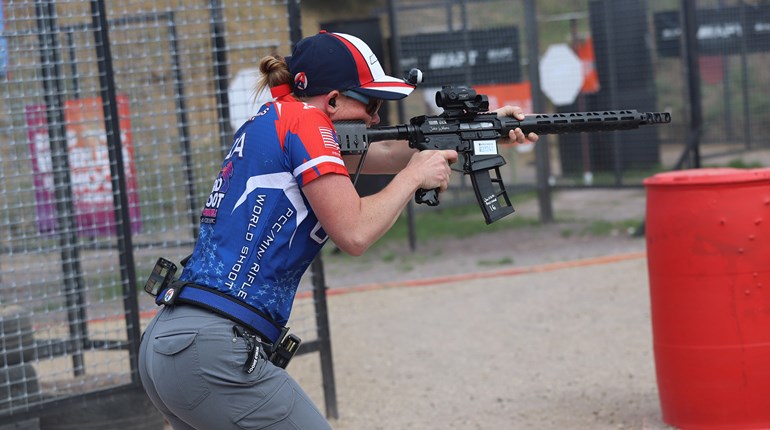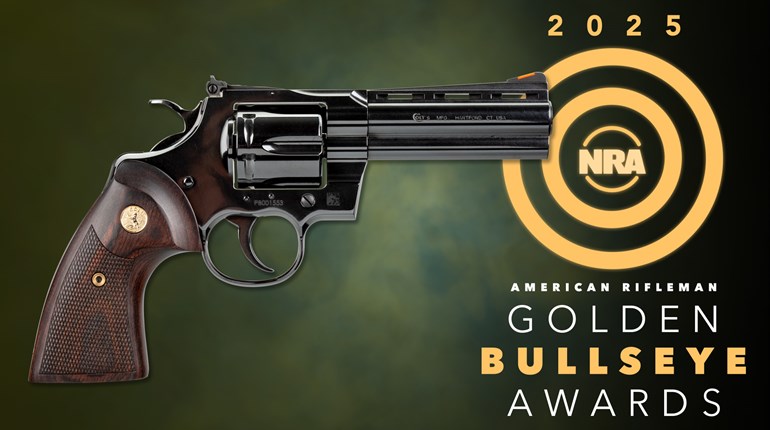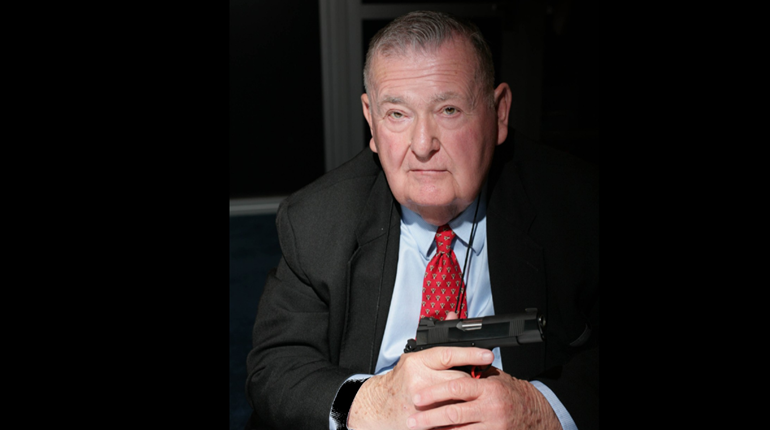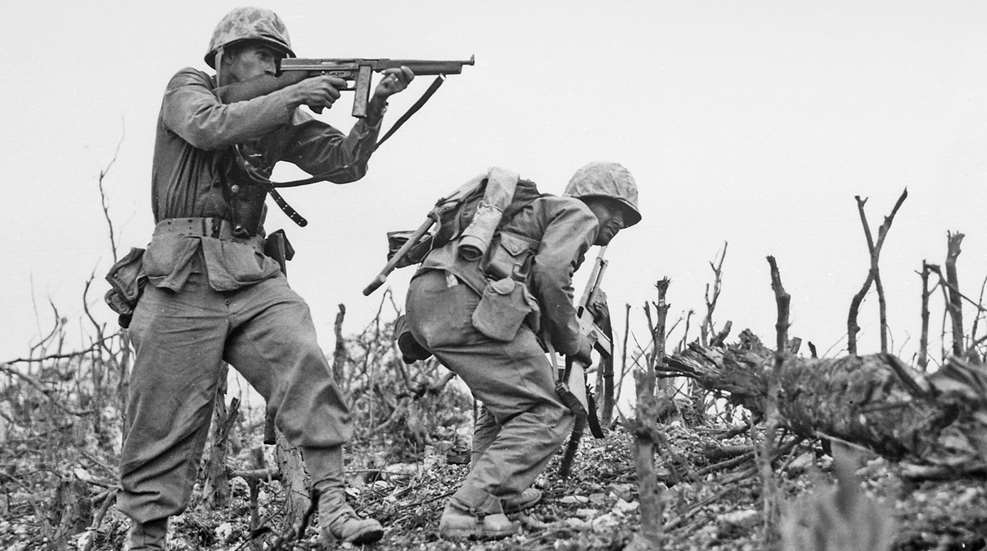
More than.1.5 million of the robust Thompson sub-machine guns were made, and they served throughout World War II, Korea and the Vietnam War. It also saw service in no fewer than a dozen other conflicts, even as recently as the war in Iraq.
It was a line from an old motion picture that best sums it up. In grainy black and white with a scratchy soundtrack, the film followed the rise to power of a slum kid who became a crime czar. The Prohibition-era success story depicted a very bumpy stairway to the top. Graphic violence drew criticism from film critics of the day. In time, the movie became a milestone in the evolving history of motion-picture violence, but we are more concerned with the use of a particular gun almost as a character. Early in the film, the hero suffers an attack by the rival gang with hundreds of rounds fired and much damage done. He is amazed at the effect of all the shooting and utters an astonished line; “Hey ... they got machine guns you can carry!”
The 1932 movie “Scarface” was one of the first to depict the Thompson submachine gun in action. We had recently ended a war in which a relatively new style of gun was a significant player. The machine gun was a firearm style that required a crew of several men to operate, so a machine gun that a single shooter could manage was important.
Although the post-World War I identification of the gun with the criminal element is very strong, it was hardly the only use for Thompson’s invention. Editorial cartoonists sketched the gun’s distinctive contours to symbolize organized crime, but many law enforcement agencies—including federal agencies—began to use this new-style firearm, as did military services and private security agencies. Eventually, the gun was distributed worldwide, so it was not out of place in such diverse places as China, Argentina, Finland or Ireland. In the early decades of the 20th century, they were instantly recognized and even had a nickname: the Tommy Gun.
The Thompson came out of chaotic trench warfare of the World War I. All of the armies involved used bolt-action rifles chambered in full-power cartridges. They were all fitted with the long bayonets of the day. Since much of the actual fighting took place in deep trenches not much wider than a man’s shoulders, the long rifle and bayonet were difficult to manage. A shorter firearm with a greater capacity would have been a much better fighting tool. John T. Thompson, an officer of the U.S. Army’s Ordnance Corps, headed up a crash program to develop a gun that would fill the bill. Sometimes known as the “Trench Broom,” the new gun was just barely too late for use in World War I. A new firm called Auto Ordnance was formed to market the gun commercially. On contract, Colt Firearms manufactured the first several thousand of the M1921 Models.
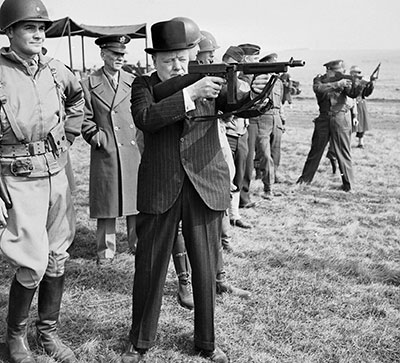
In the context of close-range wartime fighting where effectiveness beyond 25 yards or so was not required, the Tommy gun was a quantum leap forward. The gun used the same .45 ACP ammo as our service handguns. It was the most powerful handgun ammo at use anywhere in the world at the time. With a Thompson, there were plenty of the stubby .45-caliber cartridges on tap and ready to fire. In particular, 1920s-vintage Thompsons fed from 20-round stick magazines, 50-round drums or even a whopping drum with 100 rounds. The reasoning was to prevent a Soldier in the process of sweeping a trench from running dry.
The gun itself represented American gunmaking at its very best. Everything was polished and finished to perfection. The gun did not evolve from earlier models, but was completely different. A short, carbine-length firearm with a 10-inch, finned barrel and massive, squared receiver, the Tommy gun was unashamedly heavy. Its contours were proof positive of the truth of the designer’s dictum that form follows function. An odd (removable) buttstock of varnished walnut had a great deal of drop to get the shooter’s aim low and close to the thrust line of recoil. There was also a walnut rear pistol grip below and behind the trigger guard.
Forward of the receiver, there was a fore-end with an unusual shape. It was a racy vertical pistol grip with deep finger grooves, angled backward. Some observers have opined this shape to be unnecessary. They never fired a 1921 Thompson. These arms deliver a very high rate of fire and that tends to make the muzzle rise abruptly. The foregrip is there to make it easier for the shooter to hold the climbing muzzle down.
The Thompson worked well. Although heavy, the close-range firepower differential over other individual arms made it an easy choice. Generally reliable, it was also accurate and had a selective-fire option for single shots that made greater accuracy possible. Introduced in the early years of the roaring ’20s, the Thompson was actively used at least through the Vietnam War. There were a few modifications over the years, the most important being the M1 and M1A1. These were simplified World War II versions of the Tommy gun. Counting all variants, Thompsons were made in the millions.
It was a significant firearm. While the Thompson was not the very first submachine gun, it was certainly the first to be so widely distributed and used. The pistol-caliber ammo limited its range, and that upset stuffy old generals who couldn’t see the advantages. John Thompson’s gun was misused a great deal, but still fought a number of wars with great panache. There is a certain appeal about it that defies logical analysis.
I believe it was such a bold step forward in firepower that the user’s intent was clear and terrifying. At 11 pounds, the Thompson was indeed a machine gun you could carry—and superb fightin’ iron.












